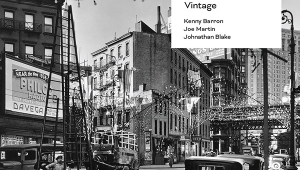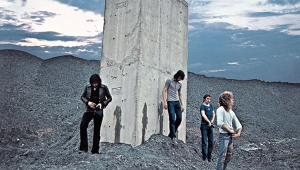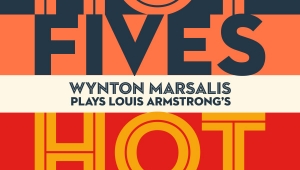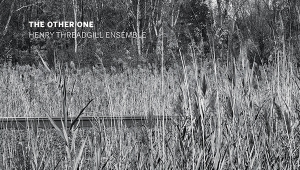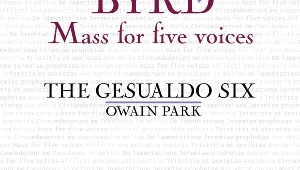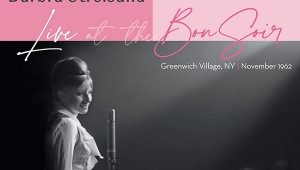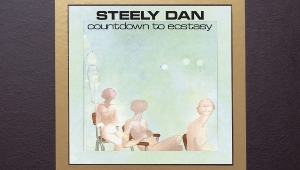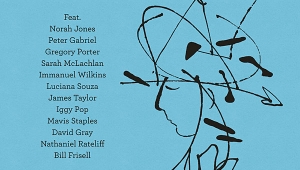| Columns Retired Columns & Blogs |
Recording of August 1999: Duke Ellington: The Complete RCA Victor Recordings
DUKE ELLINGTON: The Centennial Edition: The Complete RCA Victor Recordings
Duke Ellington, piano; and his bands, 1927-73
RCA Victor 63386-2 (24 CDs). 1999. Orrin Keepnews, coordinating prod.; Keepnews, Steven Lasker, reissue prods.; Steve Backer, exec. prod.; Lasker, Dennis Ferrante, digital transfer engs.; Lasker, Paul Brizzi, CEDAR restoration engs. AAD? TT: 27:33:35
Performance *****
Sonics ****
However you pose the dilemma—soloist vs composer, bandleader vs player, Cotton Club vs Carnegie Hall, writer of upbeat jazz tunes vs composer of lush melodic ballads, secular music vs sacred—Duke Ellington could do it all. And a good portion of what he recorded for RCA Victor is packed into this red-linen-covered box.
Duke Ellington, piano; and his bands, 1927-73
RCA Victor 63386-2 (24 CDs). 1999. Orrin Keepnews, coordinating prod.; Keepnews, Steven Lasker, reissue prods.; Steve Backer, exec. prod.; Lasker, Dennis Ferrante, digital transfer engs.; Lasker, Paul Brizzi, CEDAR restoration engs. AAD? TT: 27:33:35
Performance *****
Sonics ****
Perhaps the most intriguing late-night music argument concerns whether or not America has ever birthed a composer or soloist on a level with Mozart, Beethoven, or other icons of western (ie, European) music. In the composer category, George Gershwin or Irving Berlin is usually the first name mentioned, while an esoteric few will fight for Cole Porter, Jerome Kern, Aaron Copland, or Harold Arlen. Chuck Berry is often mentioned when rock'n'roll is raised. When it comes to soloists, jazz rules—Louis Armstrong is always the winner, with Trane, Bird, and Miles close behind. At this point in the conversation, however, someone usually mentions Duke Ellington, and the room falls into a hush.
 | |
I've been writing about music for 15 years, but this colossal, 27?-hour chunk of sound was nearly the death of me. Just so you know: I plowed through the entire 462-track set twice, end to end, in marathon fashion—once just casually lolling through, the second time actively listening as long as my ears and (more problematically) my brain held out. I also went back to carefully A/B certain tracks with earlier Ellington reissues.
Ellington's time with RCA Victor is a complex patchwork. He made his first records ever on RCA Victor in 1927. Although he also recorded for a number of other labels under a series of pseudonyms, Ellington stayed with Victor through 1934 (discs 1-7 here), moving from the "jungle music" of his early Cotton Club days to the more sophisticated arrangements and ideas of his later years.
After a stint at Columbia, Ellington returned to Victor in 1940 and stayed until 1946. In those six years he recorded most of his classic repertoire with what's universally acknowledged to be his greatest band (discs 8-17). This is also the period when soloists like trumpeter Cootie Williams, alto saxman Johnny Hodges, and tenor player Ben Webster emerged.
From the late '40s until his death in 1974, Ellington spread his musical output across a number of labels, including RCA Victor. Victor's haul included three Sacred Concerts (discs 18-20) and several single albums (discs 21-24), along with his last two appearances on record—live performances from his final European tour, in 1973. His enduring popularity meant that by the time this set was compiled, very few Ellington tracks had been left unreleased.
The glories of the music contained in this gorgeously packaged, scrupulously annotated box are too numerous to mention in anything short of the 124-page, heavily illustrated book that accompanies it. The sessions are arranged chronologically, which means that all takes of a certain tune are grouped together. This might annoy the less academically inclined, but it gives fans and scholars a ready avenue by which to compare the major and minor arranging tweaks Ellington applied between takes.
Along with being a completist's dream—and one of the most artfully assembled boxed sets yet issued—this compact compendium promised major sound improvements as one of its major selling points. Repeated listenings, however, made it clear that there is sonic news bad and good.
The guts of this box—or of any Ellington collection—are the 78rpm recordings from the early '40s, when tunes like "Cotton Tail," "Harlem Air-Shaft," "In a Mellotone," "Warm Valley," "Sentimental Lady," "I Got It Bad (And That Ain't Good)," and, of course, "Take the A Train," all made their first appearance on the bandstand and on record. The good news is that this material appears here in the finest sound yet. The band's presence has blossomed in new ways: The tones are fuller all around, and details like Jimmy Blanton's leading bass lines on "Sophisticated Lady" (disc 9, track 12) have a sonority and snap missing from previous issues.
The bad news is that the original masters contain a lot of rough moments. In much of the '40s material, a steady hiss rises and falls in ways that, while dramatically less annoying than in previous remasterings, is still very prominent. That said, producers/engineers Lasker, Keepnews, and Ferrante have done a superhuman job, and deserve kudos on top of kudos for making the right decisions when it came to weighing cleaner sound against allowing the music to speak.
Originally priced at around $400, this set can now be found (mostly via Web retailers) for under $300—a price that may still be too rich for many. After price, and the fact that the set is a limited edition of 10,000 copies, the most fundamental question concerning this or any other +20-CD box is, does anyone need this much of any single musician?
The answer is obvious. If there were ever a popular musician of the past half century who deserves and, more important, can sustain interest through so long a set, it's Duke Ellington. The astonishing variety and quality of the music and musicianship contained in The Centennial Edition makes that question and any other late-night disputes obsolete.—Robert Baird
- Log in or register to post comments


